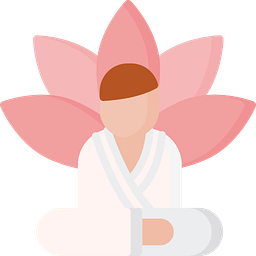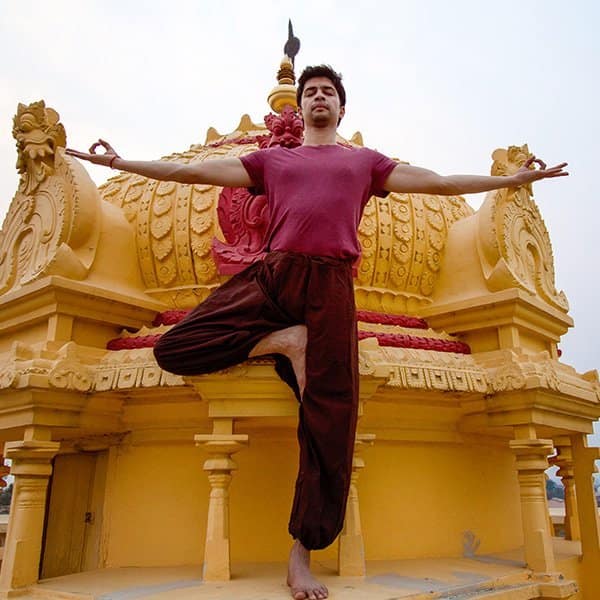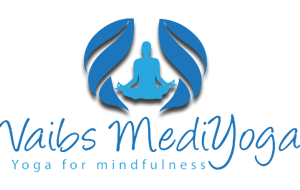Classical Hatha Yoga

Hatha yoga is a path toward creating balance and uniting opposites. The word “ha” means sun, “ta” means moon. “Hatha” means the yoga to bring balance between the sun and the moon in you, or the Pingala and Ida in you. You can explore Hatha yoga in ways that take you beyond certain limitations, but fundamentally, it is a physically preparation - preparing the body for a higher possibilities. The aim of yoga is to experience a meditative state in everyday life which has the effect of increasing performances manifold as the work is done with more efficiency and energy. Blend of physical postures (asanas), breath work (pranayama), meditation and relaxation that when combined together activates the parasympathetic nervous system leaving the practitioner feeling more relaxed and better able to assimilate any stress in their life.

BenefitsOf Hatha Yoga
- Builds immunity - When you contract and stretch muscles, move organs around, and come in and out of yoga postures, you increase the drainage of lymph. This helps the lymphatic system fight infection, destroy cancerous cells, and dispose of the toxic waste products of cellular functioning
- Relaxes the mind and releases tension in the body - Yoga really encourages you to focus on your breath, which relaxes the mind. Whether you are trying to find ease in a difficult pose or you are practicing yin yoga, the breath will help you calm the mind and release tension in the body.
- Tones the spine - All of our nerves branch out from the spine, connecting the various organ systems to the brain. It is said that if the spine is rigid, nerve impulses cannot flow freely through the body and internal organs become weakened and subject to disease. If you keep the spine supple, the nerves remain strong and your health is maintained.
- Strengthens and tones body - Yoga poses are weight bearing, are held for varying lengths of time, and require the use of the core muscles. It is a great option for functional fitness since it allows your body to be both strengthened and stretched in positions that your body is naturally in on a day-to-day basis.
- Increase flexibility - There are two major schools of scientific thought on what actually most limits flexibility and what should be done to improve it. The first school focuses not on stretching muscle fiber itself but on increasing the elasticity of connective tissues, the cells that bind muscle fibers together, encapsulate them, and network them with other organs; the second addresses the “stretch reflex” and other functions of the autonomic (involuntary) nervous system. Yoga works on both. That’s why it’s such an effective method for increasing flexibility.
- Weight loss
- Good health and many more
What happens During a Classical Hatha Yoga Class?
A perfect class for those who have little to no experience with yoga, or for experienced students who want to bring their practice back to basics. This beginners class uses a combination of simple hatha yoga postures, movement and breath to work on strength, flexibility and balance. The focus on alignment for every body type allows beginners to safely learn the basics. This class is a perfect way to develop the practice of living in now, that can continue in a day to day life. After class there is also an opportunity for questions or further explanation on anything yoga.
Classical Hatha Yoga For Beginners L1: February Batch
There will be a total of 10 classes
Sunday and Wednesday:
February: 19, 23, 26,
March: 1, 4, 8, 11, 15, 18, 22
Price:
Beginners batch:<br> $180+HST<br>
Classical Hatha Yoga Intermediate L2: Spring Batch
There will be a total of 12 classes
Saturday and Monday:
March: 2, 7, 9, 14, 16, 21, 23, 28. 30
April: 4, 6, 13
Price:
Beginners batch: <br>$240+HST<br>
Level 1
Classical Hatha Yoga - Beginners
All the classes are for 90 mins.
Participants will be learning yogic breathing.
25 asanas and pre medition techniques.
Level 2
Classical Hatha Yoga - Intermediate
All the classes are for 90 mins.
Participants will be learning yogic breathing.
30 asanas and pre medition techniques.
Level 3
Students must be familiar with intermediate yoga postures, including inversions and backbends.
More challenging and vigorous sequences are typical in these classes.

